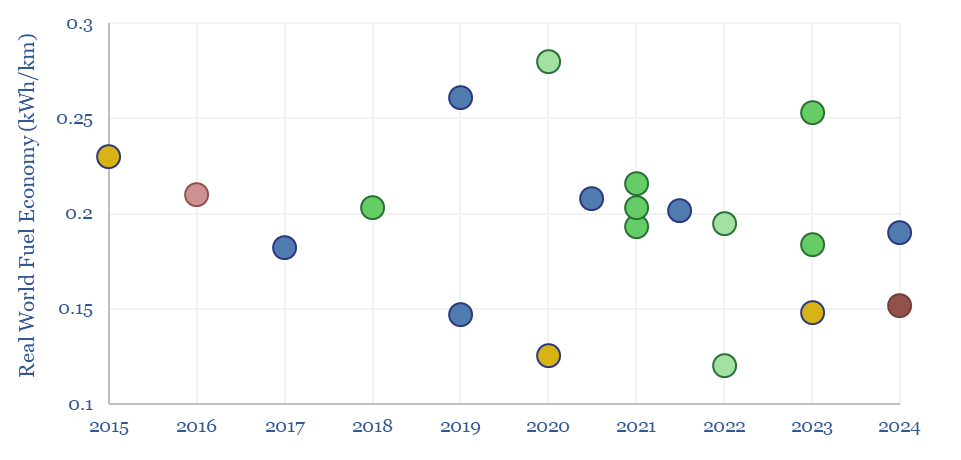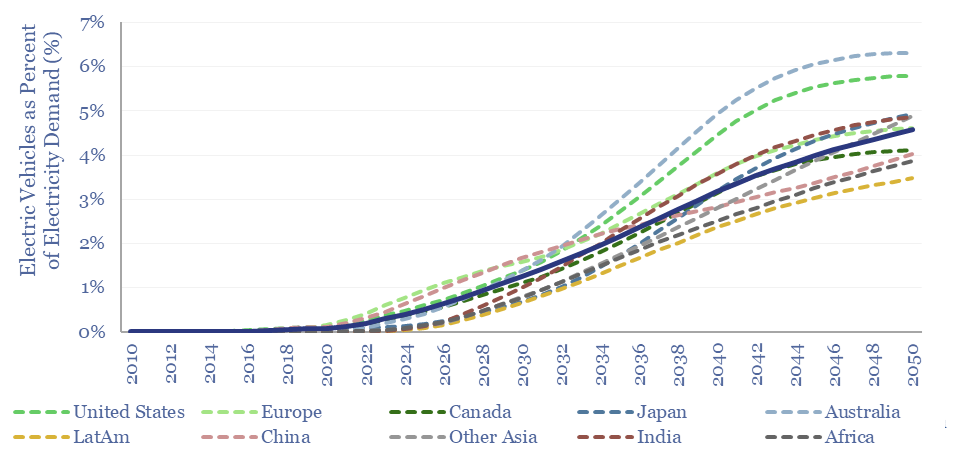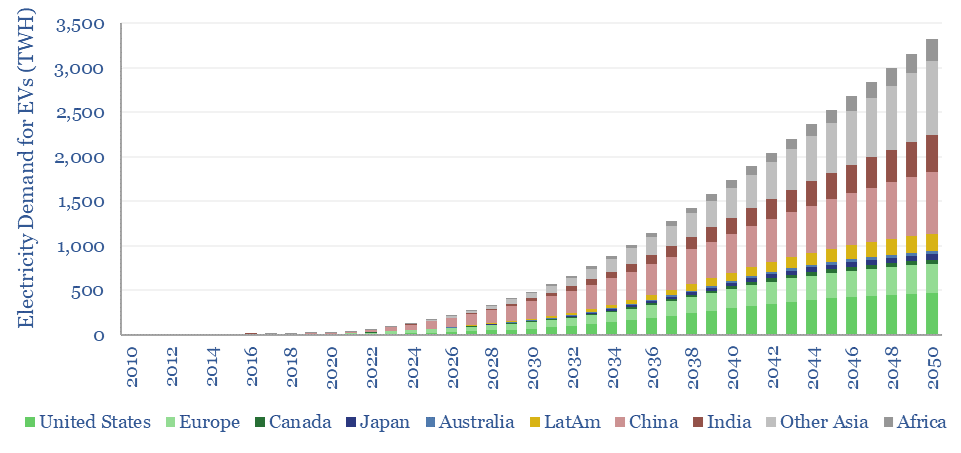Global electricity demand for electric vehicles will rise from 120TWH in 2024 to 500 TWH in 2030 and 3,300 TWH in 2050, ultimately adding 11% upside to today’s global electricity demand, as part of our roadmap to net zero. This data-file quantifies electricity demand for EVs by region and over time, including data into the real-world fuel economy of EVs.
The key advantage of electric vehicles is their 4x higher efficiencies than ICEs, harnessing 80-90% of input electricity, whereas an ICE vehicle surrenders 50-70% of the energy content of fuels as waste heat, which is exhausted from the tailpipe.
The real-world fuel economy of electric vehicles is around 0.2 kWh/km, which equates to 120mpge, based on studies and self-reported data tabulated in a tab of this model (chart below). Note real world energy consumption can be 20-60% higher than stated by manufacturers or on test-cycles, especially during cold weather.

Global electricity consumption for electric vehicles likely reaches 120TWH in 2024 (0.4% of global electricity), rising to 500 TWH in 2030, 1,750 TWH in 2040 and 3,300 TWH in 2050, based on our numbers, which in turn link to our EV forecast databases.
Without any expansion of the grid, our numbers entail that EVs would add 1.6% upside to today’s global electricity demand by 2030, 6% by 2040 and 11% by 2050. The upside is mostly back-end-loaded, while near-term electricity demand is driven more by data-centers, which could require an additional 1,000 TWH by 2030.
However, we also see global electricity use more than doubling to 70,000 TWH by 2050 in our roadmap to net zero. If this ramp-up happens, without falling foul of power grid bottlenecks, then EVs will comprise 1.7% of global electricity in 2030, 3% in 2040 and 5% in 2050.

Expanding the grid is necessary for meeting electricity demand for electric vehicles, for displacing 25Mbpd of oil demand by 2050 (14,000 TWH-th of primary energy). Another requirement lies in charging networks. But we see the biggest bottlenecks and opportunities in reconductoring transmission and in urban distribution.
